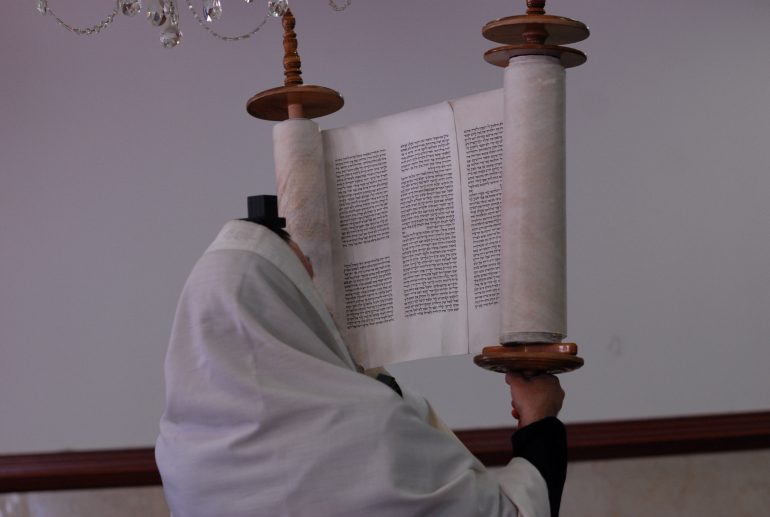By Rabbi Levi Haskelevich, Chabad at Penn
This week’s Shabbat is packed with multiple ritual and historical significant components that all come together in a very special way.
Two Torah portions: Vayakhel and Pekudei, the final portions in the Book of Exodus, both discuss the completion of the Tabernacle, also known in Hebrew as the Mishkan, which was the temporary temple that the Jews built for G-d in the wilderness after leaving Egypt. We combine the readings of both because we need to have flexibility for a leap year when there are two months of Adar.
Shabbat Chazak: Naturally, because this is the final reading of one of the five books (of Moses), we call it Shabbat Chazak. We conclude the Torah reading with Chant of “Chazak, Chazak, V’nitchazek” (Be strong! Be Strong! And may we be strengthened!).
Parashat Parah: Around this time of the year, there are four weeks in which we add an additional Torah reading. This week, in preparation for the festival of Passover, which is only three weeks away, we read about the laws of the “Red Heifer.” The Parah Aduma was a sacrifice done in order to ritually purify those who came in contact with the deceased. It is read before Passover because in the Mishkan and Temple, those who were ritually impure could not participate in the Passover offering, or for that matter, any Temple sacrifice or service. This is done before Passover to reminds us of those obligations as practiced in the Temple, but it also reminds us to purify ourselves in anticipation our own Passover even though we don’t bring an offering while we do not have the Temple.
The Calendar date: The 23rd of Adar. Seemingly a regular day on the Jewish calendar, but it is actually the date when the Divine command came to Moshe to finally erect the edifice of the Mishkan. There were seven days of training during which he would erect and de-construct the traveling structure. Finally, on the first of the month of Nissan, Moshe left it up. This took place in the year 2449 of the Jewish calendar (1312 BCE), only about 9 months after the giving of the Ten Commandments on Mount Sinai.
Shabbat Mevarchim: On a Shabbat that precedes the start of a new Jewish month, we called it the “Shabbat of Blessing.” We take the Torahs (this week two of them) and stand near the Cantor, declaring the start date as well as a blessing on the new month. Monthly, this Shabbat stands out in ritual and is considered a special day. In some communities they will hold additional gatherings, aimed at inspiring the participants. In other communities, they will even awake early before Shabbat morning services to recite the entire book of Tehilim (Psalms) in a Minyan before starting the service. This service usually takes more than an hour an half itself!
Tying all this together?
The reason for “blessing” the moon is due to its diminished light, which represents the fluctuation of failure and sin. This includes the ultimate sin of idolatry and the worship of the golden calf. The Talmud teaches us that the red haifer was a ritual to cause forgiveness for the sin of the golden calf. The same is the explanation of the use of gold in the Mishkan — it was to rectify the use of gold in the idol and to use it to serve G-d. So all the above holy elements — the readings, the day of the month, the Shabbat before the new moon — come together so nicely this year.
So which of them is going to get your extra attention this week?
Shabbat Shalom!

